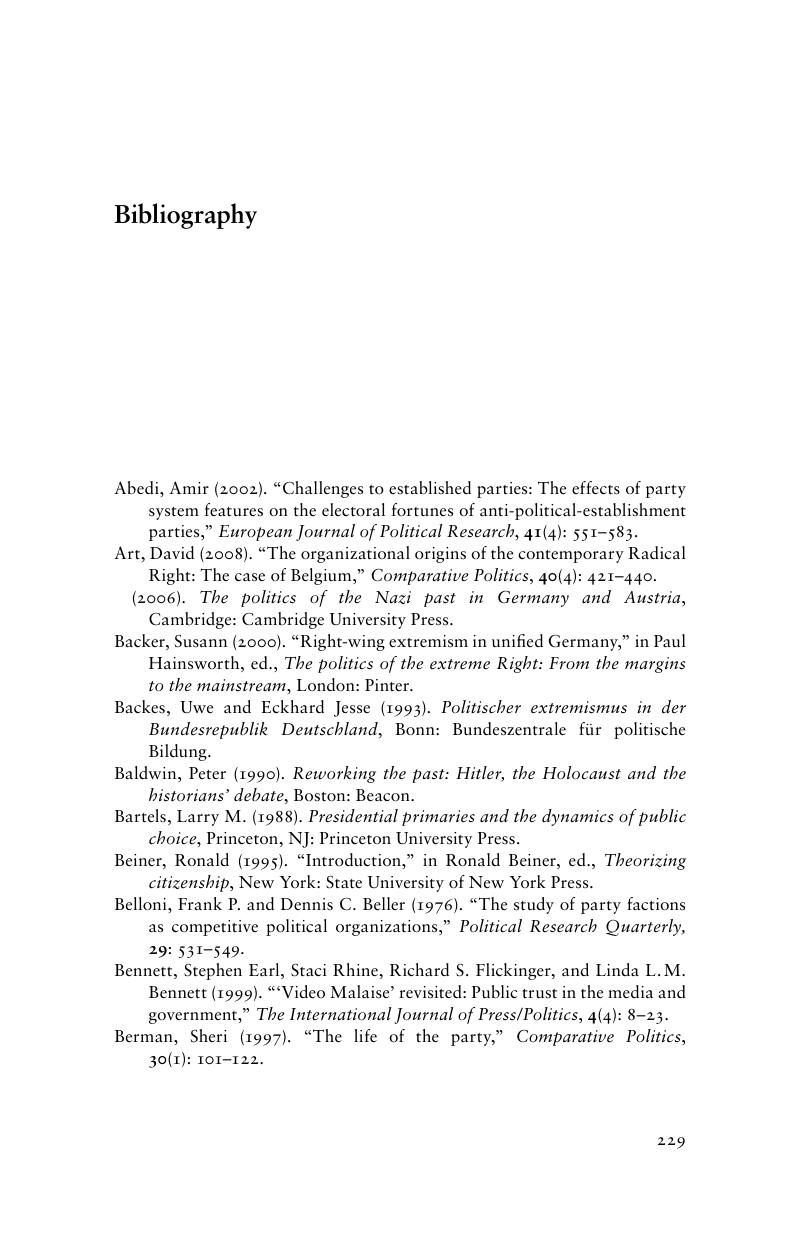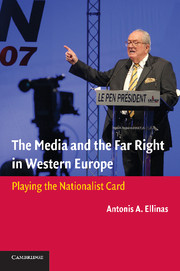Book contents
- Frontmatter
- Contents
- List of Figures
- List of Tables
- Acknowledgments
- Acronyms and Abbreviations
- 1 Introduction
- 2 Explaining Far Right Trajectories
- 3 Party and Media Politics in Austria: The Rise of the FPÖ
- 4 Competing over German Identity: Conservatives and the Nonvisible Far Right
- 5 Greek Nationalists: From Mainstream to the Margins?
- 6 The Growth, Persistence, and Fall of the French National Front
- 7 Conclusion
- Bibliography
- Index
- References
Bibliography
Published online by Cambridge University Press: 04 May 2010
- Frontmatter
- Contents
- List of Figures
- List of Tables
- Acknowledgments
- Acronyms and Abbreviations
- 1 Introduction
- 2 Explaining Far Right Trajectories
- 3 Party and Media Politics in Austria: The Rise of the FPÖ
- 4 Competing over German Identity: Conservatives and the Nonvisible Far Right
- 5 Greek Nationalists: From Mainstream to the Margins?
- 6 The Growth, Persistence, and Fall of the French National Front
- 7 Conclusion
- Bibliography
- Index
- References
Summary

- Type
- Chapter
- Information
- The Media and the Far Right in Western EuropePlaying the Nationalist Card, pp. 229 - 246Publisher: Cambridge University PressPrint publication year: 2010



